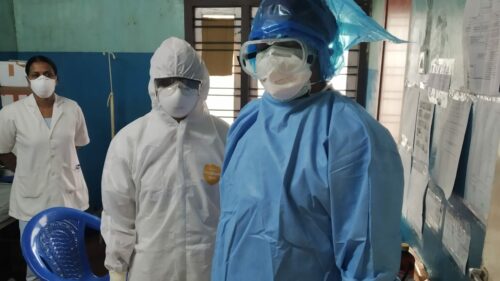Though released in January 2020, several months before the escalation of our current pandemic, Pandemic: How to Prevent an Outbreak, a compelling Netflix docu-series, touches upon terrifying scenes of our reality right now. Pandemic provides an in-depth analysis of the deadly threat of viruses such as influenza and Ebola. Its timing was so eerily prescient that in online forums, viewers have proposed conspiracy theories about how the producers managed to predict the COVID-19 outbreak. Ironically, throughout the documentary, scientists, physicians, and government threat units try to convince the audience that a deadly virus will soon emerge—the producers did not need to guess anything, as it was rather scientifically obvious.
The show revolves around different stories of virus-fighting physicians and scientists from across the world. Bioengineers Jacob Glanville and Sarah Ives strive towards a universal flu vaccine, which they hope will immunize everyone against any strain of the virus. Infectious disease epidemiologist Dr. Syra Madad directs the System-wide Special Pathogens Program at NYC Health + Hospitals, tirelessly attempting to prepare New York City for the next infectious outbreak. Dr. Dinesh Vijay fights against deadly H1N1 virus in India, while Dr. Holly Goracke tries to protect the citizens of Jefferson County, Colorado. Images throughout the series—the urgency of the flu season, violence against doctors combating Ebola in Congo, and the overabundance of patients in India—drastically impact the audience, devastating us with the sacrifices of the frontline workers.
This devastation soon transforms into disappointment over our country’s ignorance of the show’s warnings. Pandemic clearly outlined many of the reasons why our world would struggle in the face of a new form of respiratory virus. It explained the difficulties of containing the spread of viruses that originate from bats, the hypothesized source of SARS-CoV-2. The vivid footage and extensive interviews listed lack of medical replenishments, rejection of scientific authority, insufficient healthcare workers in small areas, lack of access to extensive hospitals, and poverty as potential destroyers of our healthcare systems. Yet, just a few months later when faced with the COVID-19 pandemic, government figures chose to ignore these warnings.
This fall, we have struggled with the record highs of coronavirus cases in the United States. Even though screens and papers tend to discuss only numbers, these digits represent real people. An average viewer will not have actually stepped foot inside our virus-swamped hospitals, but this show will transport them right to the epicenter, revealing what it is like to deal with a virus as either a patient or a frontline worker. Numbers and statistics represent people who are unable to breathe, shiver with fever, and suffer isolated in hospital rooms.
Just weeks before COVID-19 spread across the whole world, a six-episode Netflix show predicted its onset and divulged what we needed to change. However, we sat back and watched our forthcoming reality like a sci-fi movie. People are dying for something we should have been prepared for. There is nobody or nothing else to blame.
Sources
Pandemic: How to Prevent an Outbreak. (2020, January 22). Retrieved November 15, 2020, from https://www.netflix.com/watch/81048760?trackId=14170287.

